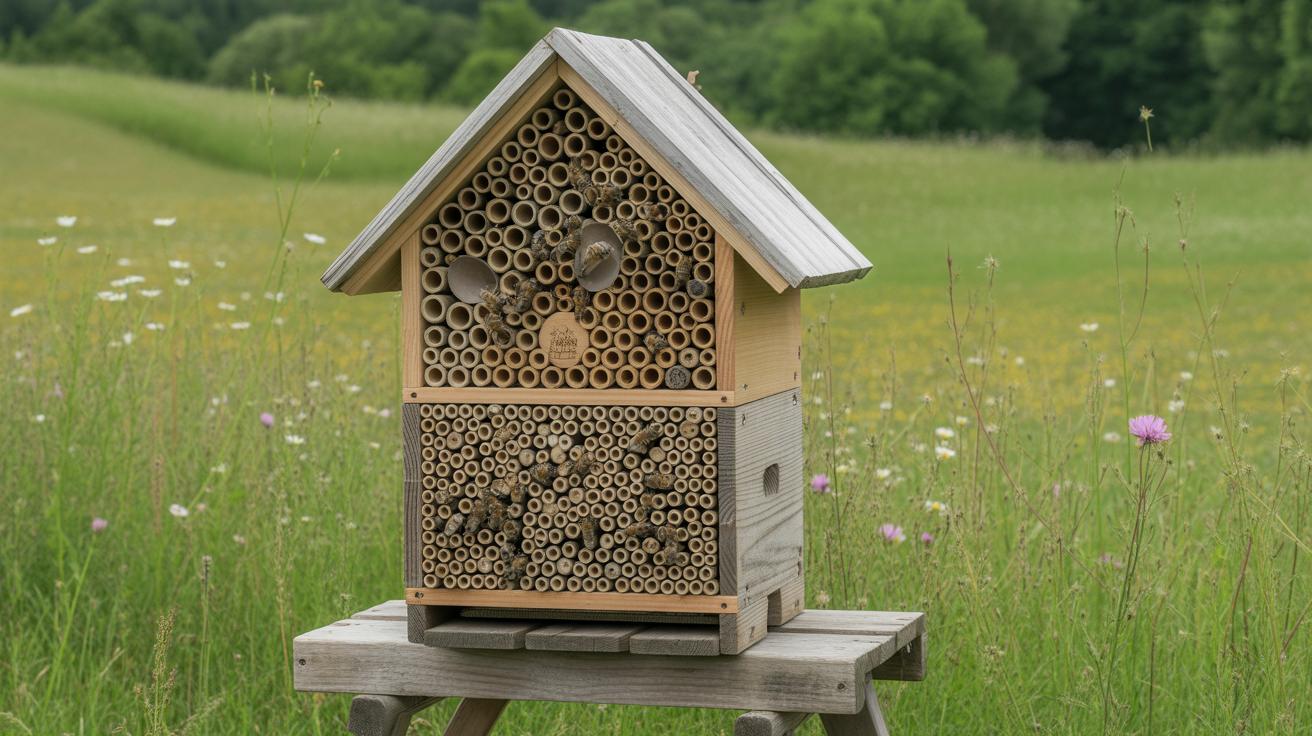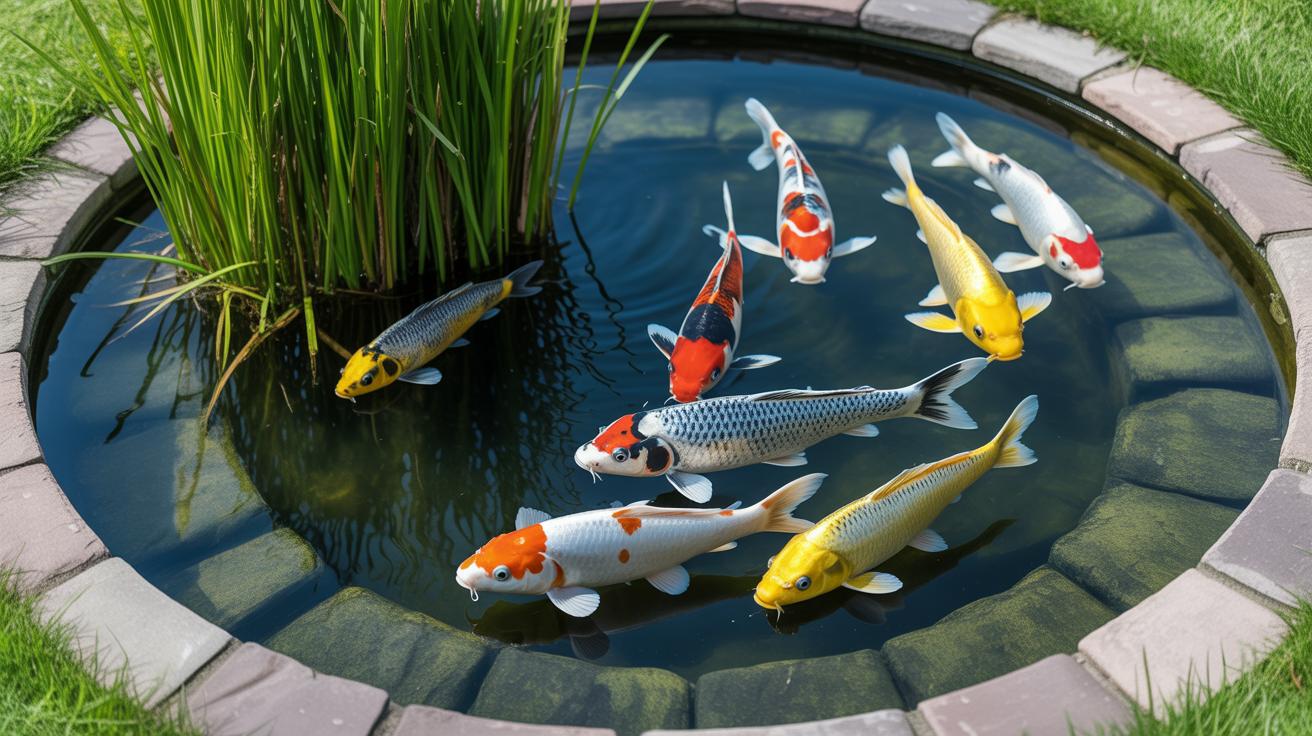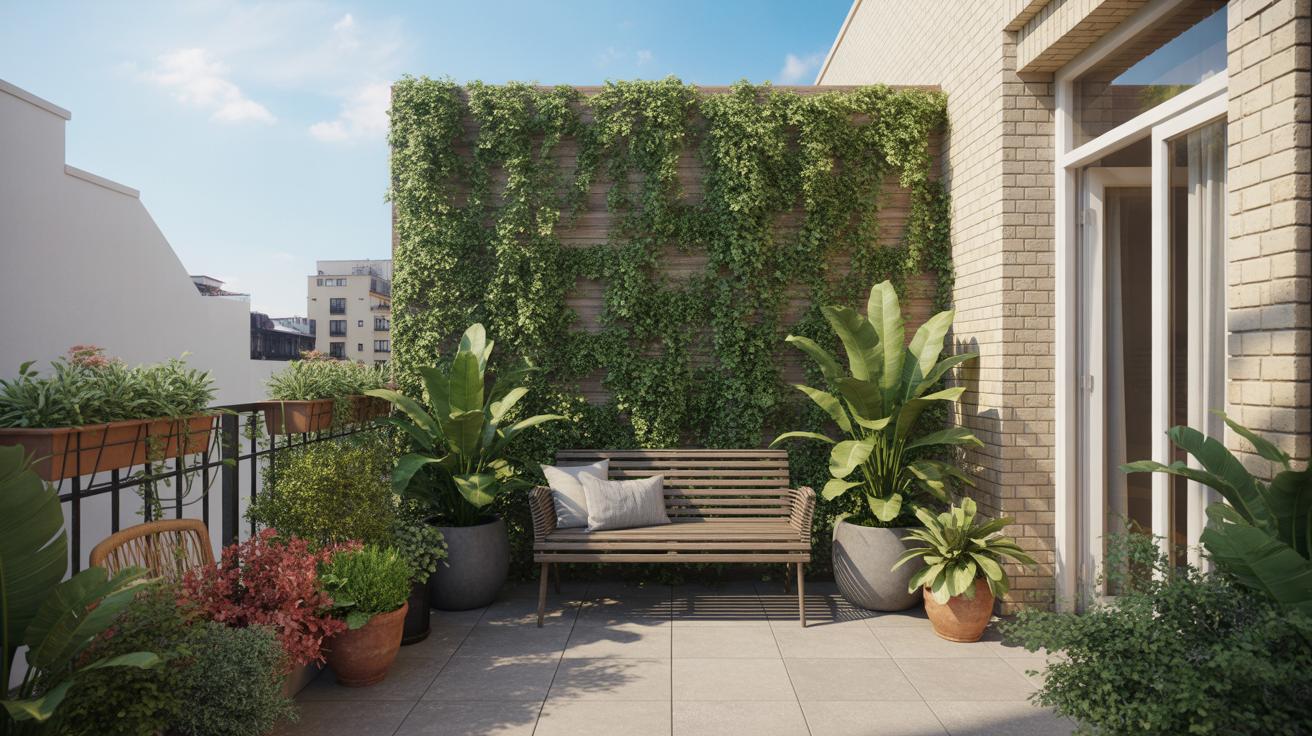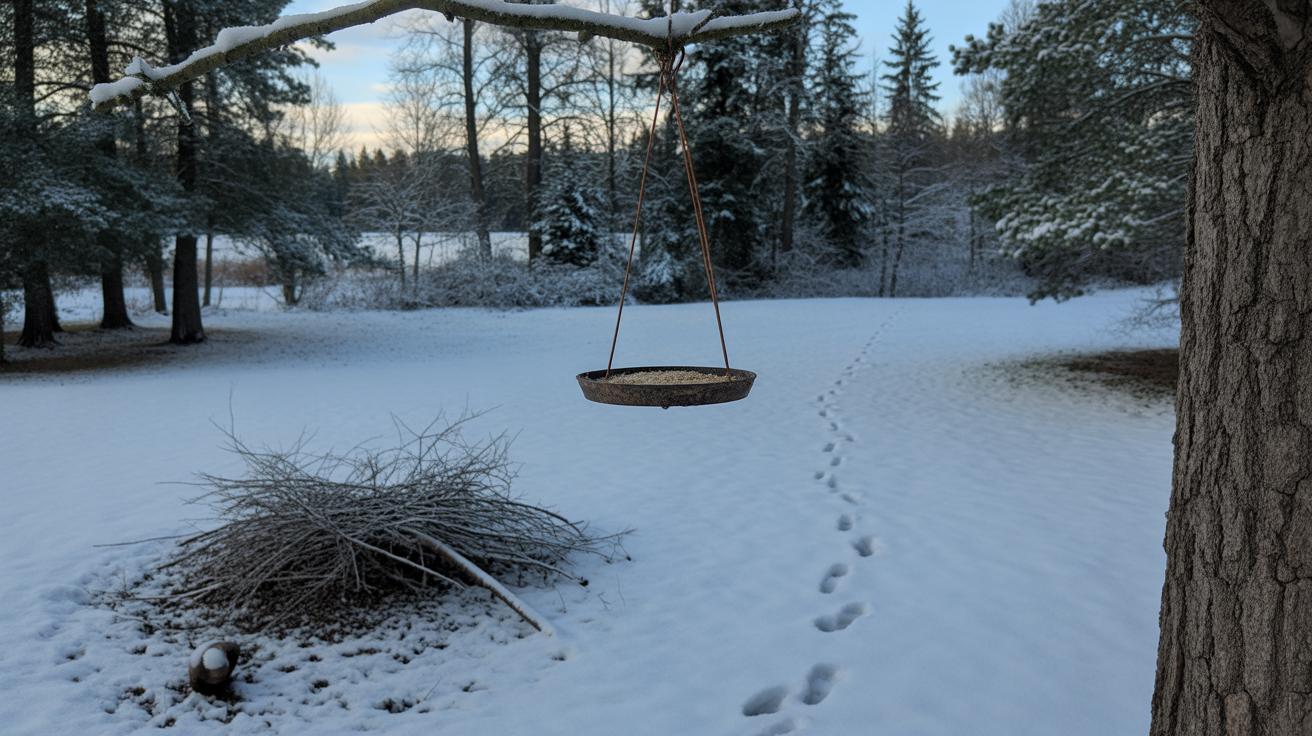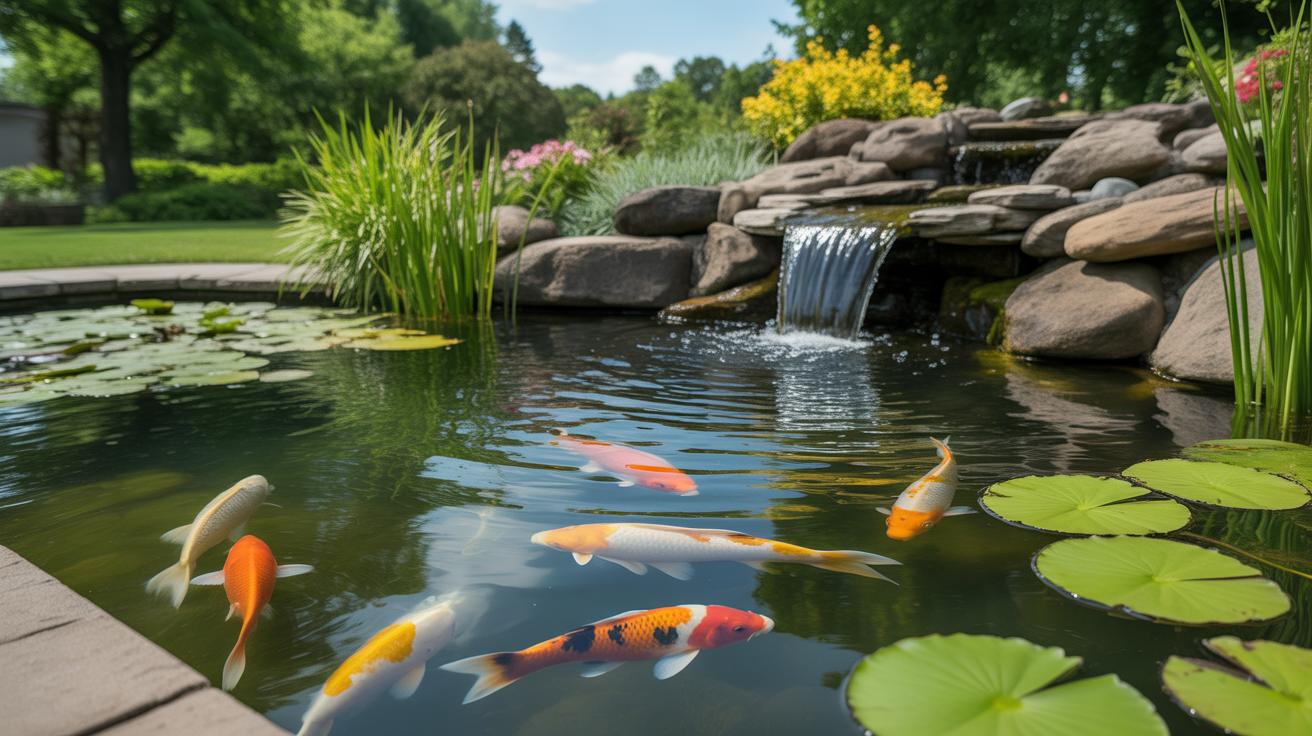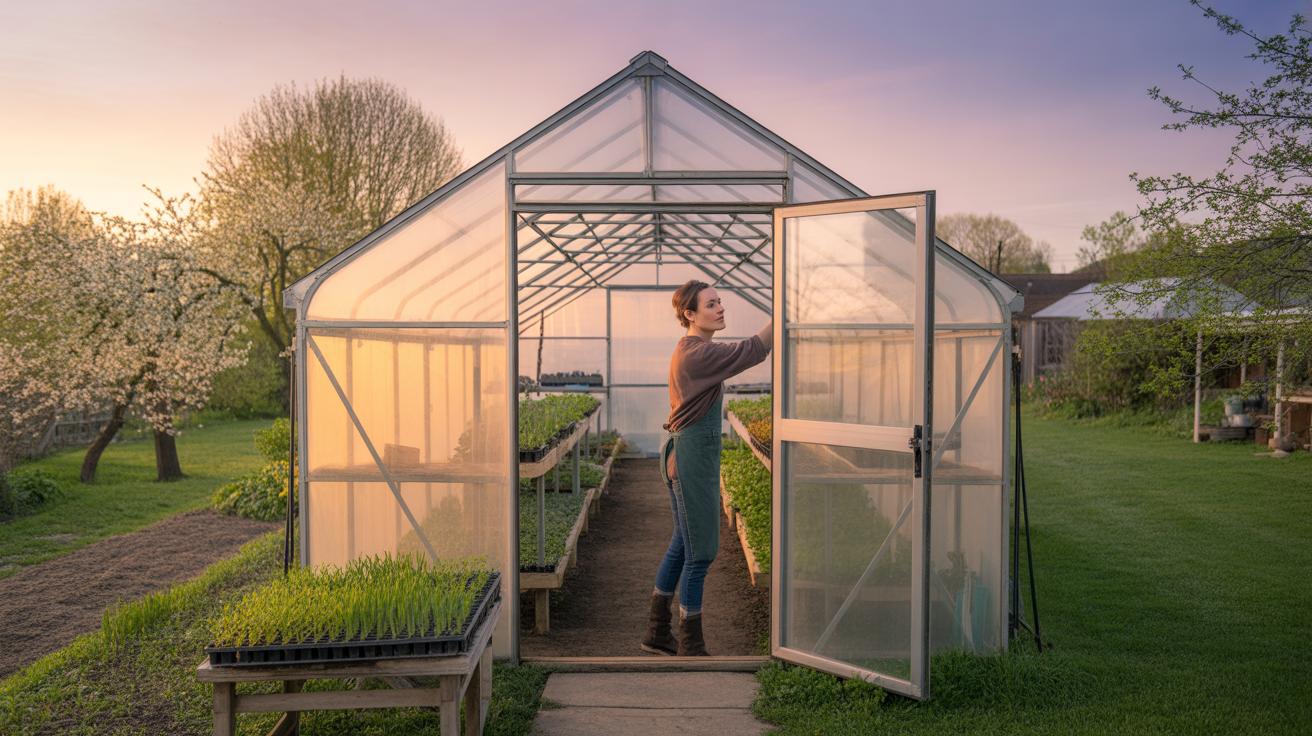Introduction
Welcome to your step-by-step guide on building a functional bee hotel at home. This guide will help you understand the importance of bee hotels and how they serve solitary bees. Unlike honeybee hives, bee hotels provide nesting areas for solitary bees, which are crucial pollinators in your garden and wider environment.
We will explore what bee hotels are, the materials needed for construction, how to choose the right location, and how to maintain your bee hotel to ensure it remains a safe and inviting place for solitary bees. By following this guide, you will contribute to supporting native bee populations directly from your home.
What Is a Bee Hotel and Its Purpose
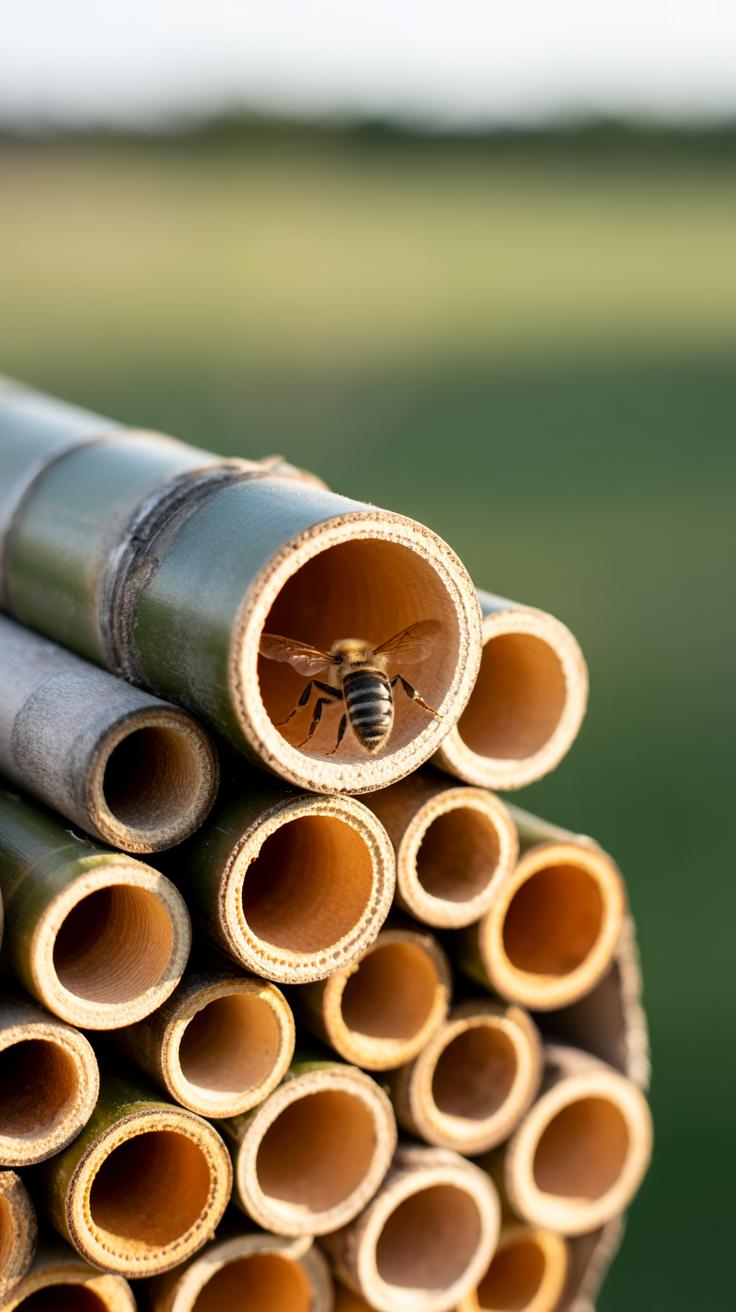
A bee hotel is basically a man-made shelter designed to offer solitary bees a place to nest, similar to the natural spots they seek out in the wild. Think of it as a kind of small, crafted habitat that imitates hollow stems, dead wood, or cracks in tree bark. Unlike hives for honeybees, these hotels don’t house colonies but instead provide individual cavities where single bees can lay their eggs.
These structures play a crucial role in supporting native bee populations, especially as natural nesting sites become scarcer due to urbanization and gardening habits that tidy up dead wood and plant stems. By putting up a bee hotel, you offer a safe space that may help solitary bees thrive close to your garden.
Building one isn’t just for the bees’ benefit either; it might change how you notice the small world around you. You could observe how bees use the holes, carry pollen, or even how some choose specific spots while others seem indifferent. That variety in behavior is part of what makes bee hotels quite fascinating and a simple way to engage with nature.
Bee hotels come in various forms, sometimes just a bundle of hollow tubes or wooden blocks with drilled holes. Each offers tiny chambers where females deposit pollen and eggs separated by mud or leaves — a neat little life cycle happening right outside your window. So, a bee hotel attempts to mimic these needs, filling a gap when natural options aren’t enough or have disappeared entirely.
In the end, it’s about giving solitary bees a fighting chance in a changing environment. You may wonder if a small box can really make a difference. From what many gardeners and researchers observe, it can—especially when combined with bee-friendly plants and a less manicured garden approach.
Bee Hotel Purpose
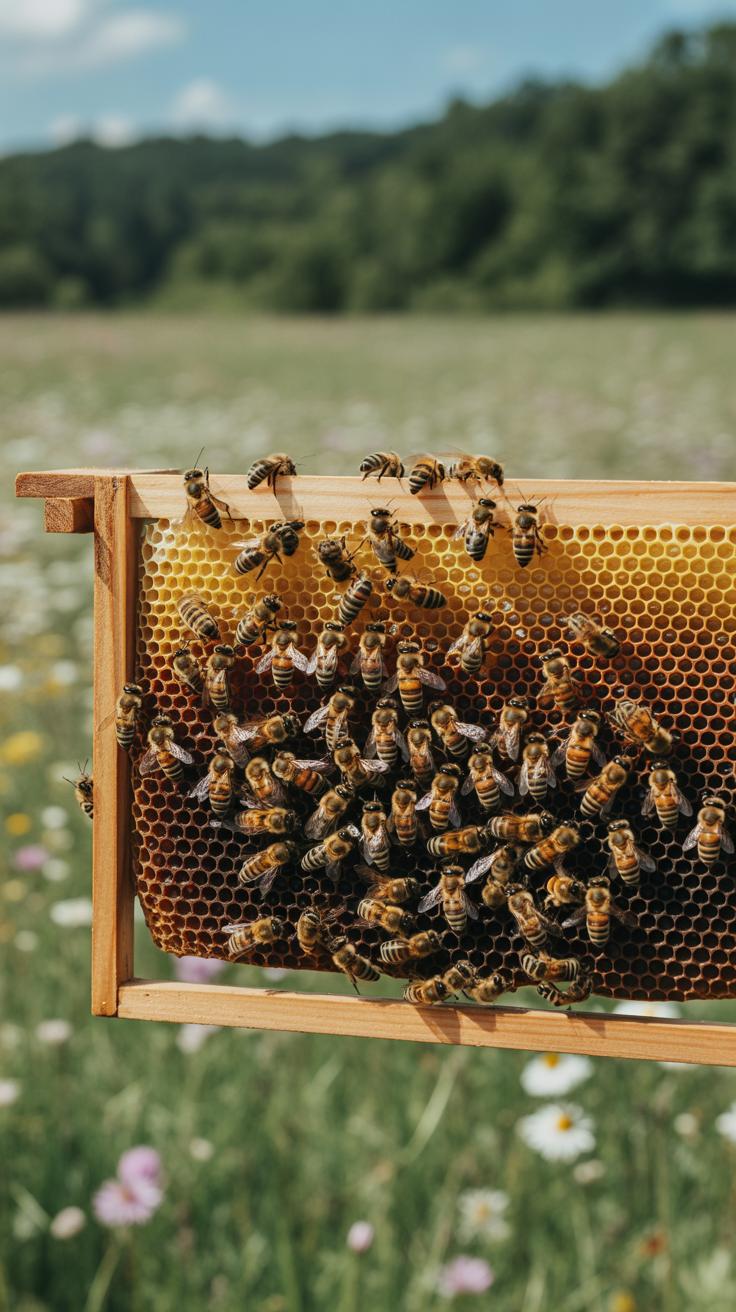
A bee hotel is basically a simple man-made structure designed to offer shelter to solitary bees. Unlike their social cousins that live in hives, solitary bees need individual nesting spots. Bee hotels provide a space that mimics their natural nesting sites, like hollow stems, small holes in wood, or cracks in walls. Think of it as a tiny apartment complex built just for these little pollinators.
Its main role is to support local bee populations by giving them safe, dry places to lay eggs and develop. When gardens or wild areas lose natural homes to urbanization or intensive farming, these hotels become essential. You might wonder if they really make a difference—sometimes it feels like nature adapts on its own—but studies and many backyard experiences show that well-placed bee hotels can boost solitary bee numbers noticeably.
Bee Hotel Design Basics
At its core, a bee hotel consists of a box or frame filled with tunnels or cavities the bees can nest in. Usually, these are hollow tubes made from bamboo or reed or holes drilled directly into blocks of untreated wood. The holes tend to vary in diameter, roughly 2 to 10 millimeters wide, to suit different bee species.
The way these tubes are packed inside the structure matters. They should be snug to prevent falling out but spaced enough to avoid crowding. The hotel’s entrance usually faces south or southeast to catch morning sun, warming the tubes early and encouraging activity. You’ll notice some hotels layered with a roof or overhang to shield the nests from rain, something I learned after the first wild rainstorm soaked my early attempt—lesson learned.
Benefits and Challenges of Bee Hotels
Setting up a bee hotel can support pollination in your garden and nearby areas by encouraging solitary bee presence. They also offer opportunities for you to observe bee behavior up close, which is pretty rewarding. Plus, these hotels may help researchers monitor bee populations without disturbing wild nests.
But there are some trade-offs. Bee hotels can become hotspots for parasites or diseases if not maintained properly, since many bees use the same holes year after year. Predators like wasps might also take advantage of the easy food source, which complicates things. On top of that, not every solitary bee species will use these structures. So while they help, they’re not a cure-all for bee decline.
When you consider all that, you might wonder if a bee hotel is more than just a fun garden accessory. I think with thoughtful design and care, it really can be a small but meaningful step to help native bees thrive. Would you agree?
Choosing the Right Materials for Your Bee Hotel
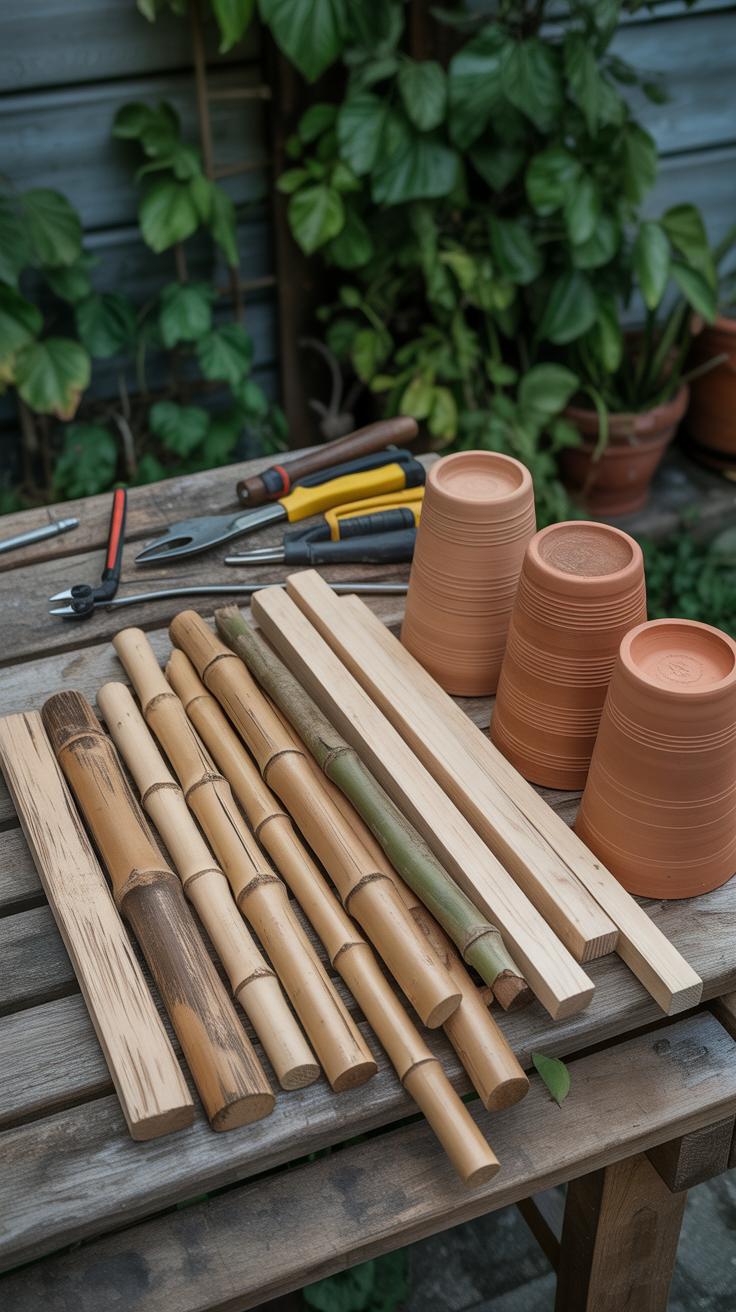
Picking the right materials for your bee hotel might sound simple, but it really shapes how well it serves the bees. Wood, bamboo, and reeds stand out as solid choices. These natural materials mimic what solitary bees would use in the wild, offering a familiar place for them to nest and raise their young. When you look for wood, go for hardwoods like oak or maple if you can; they tend to weather better and resist rotting longer than softer woods. Pine can work, but only if it’s untreated and dry—sometimes it can warp or break down too quickly.
Bamboo and hollow reeds are fantastic for creating those little tunnels bees love. They’re durable and dry out well, preventing mold growth, which is a real concern for bee health. I’ve seen some bee hotels fail because they used wet or resinous wood that started to rot within months.
Stay away from plastics or painted woods. Plastic traps moisture and heat, creating a hostile environment for bees. Painted or chemically treated wood can leach toxins harmful to them. Also, woods like cedar and redwood, often used outdoors, sometimes contain natural oils that might irritate the bees or inhibit nesting. So, they’re less ideal than you might think.
Choosing good materials means balancing weather resistance with bee safety. That balance isn’t always clear-cut. Sometimes a piece of wood looks perfect until it traps water inside the holes. Keep this in mind while preparing your materials—it really does make a difference whether the bees stay or fly away after a trial night.
How to Build Your Bee Hotel Step by Step
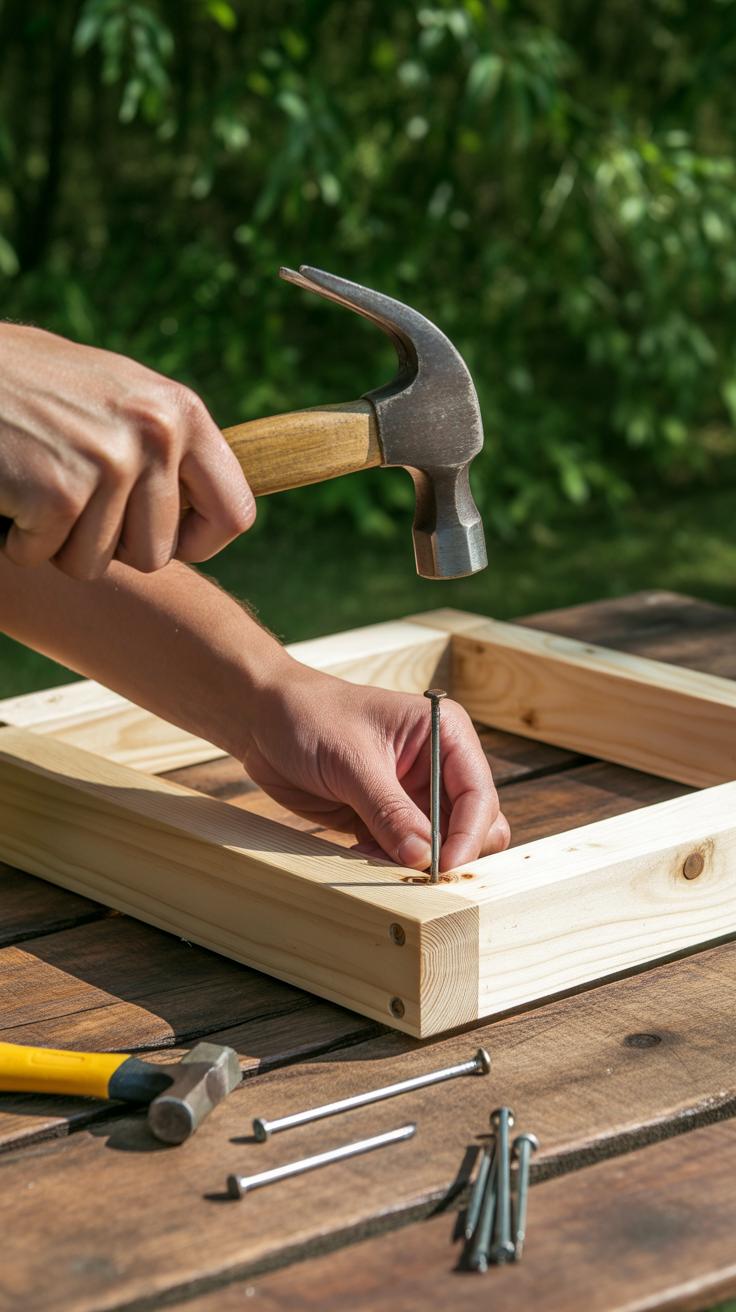
Preparing the Base Structure
Start with choosing your main frame or wood block. A solid piece of untreated hardwood, like oak or elm, works well—it’s dense enough to hold drilled holes without cracking easily. You want something roughly the size of a small toolbox, say 12 by 8 inches, but there’s room to experiment with size depending on your space. Before drilling, sand any rough edges carefully to avoid splinters or sharp bits. It doesn’t have to be perfect; a bit of unevenness doesn’t bother the bees, but watch out for cracks or splits that might grow later.
If you’re building a frame rather than a solid block, make sure the sides are sturdy and joined well—using screws or small nails will keep things tight. A simple box with a back panel is enough, but some prefer adding a small roof to protect from rain. You might skip that step, though, if you plan to hang it under a porch or sheltered spot.
Adding Nesting Tubes and Finishing Touches
Now for the fun part: adding the nesting holes. If you’re drilling into wood, use drill bits between 3 to 10 millimeters wide. The holes should be about 3 to 6 inches deep but avoid drilling all the way through. Bees like a closed back to feel safe. I found that marking hole depths on the bit with tape helps stop too soon or too deep. Space holes evenly but not too close; leaving a centimeter or so between them reduces wood splitting.
If using bundles of hollow tubes like bamboo or reed, cut them cleanly and bundle tight inside the frame. Secure them with a thin wire or string, but keep it loose enough so they don’t get crushed. The tube ends should be flush with the opening of the box—or slightly recessed to shelter bees better.
Last touches? Maybe a light coat of natural oil on the outside to protect from weather. Don’t seal the holes or cover them with varnish—that would trap moisture. And yeah, it might sound trivial, but adding a small perch or slightly angling the hotel forward can help bees land more easily.
Building a bee hotel feels straightforward but ask yourself: How detailed do I want to get? Sometimes simpler designs work best. I’ve seen tiny hotels thrive just as much as elaborate ones. So, maybe start simple, see what happens, then adjust later.
Placing Your Bee Hotel in the Perfect Location
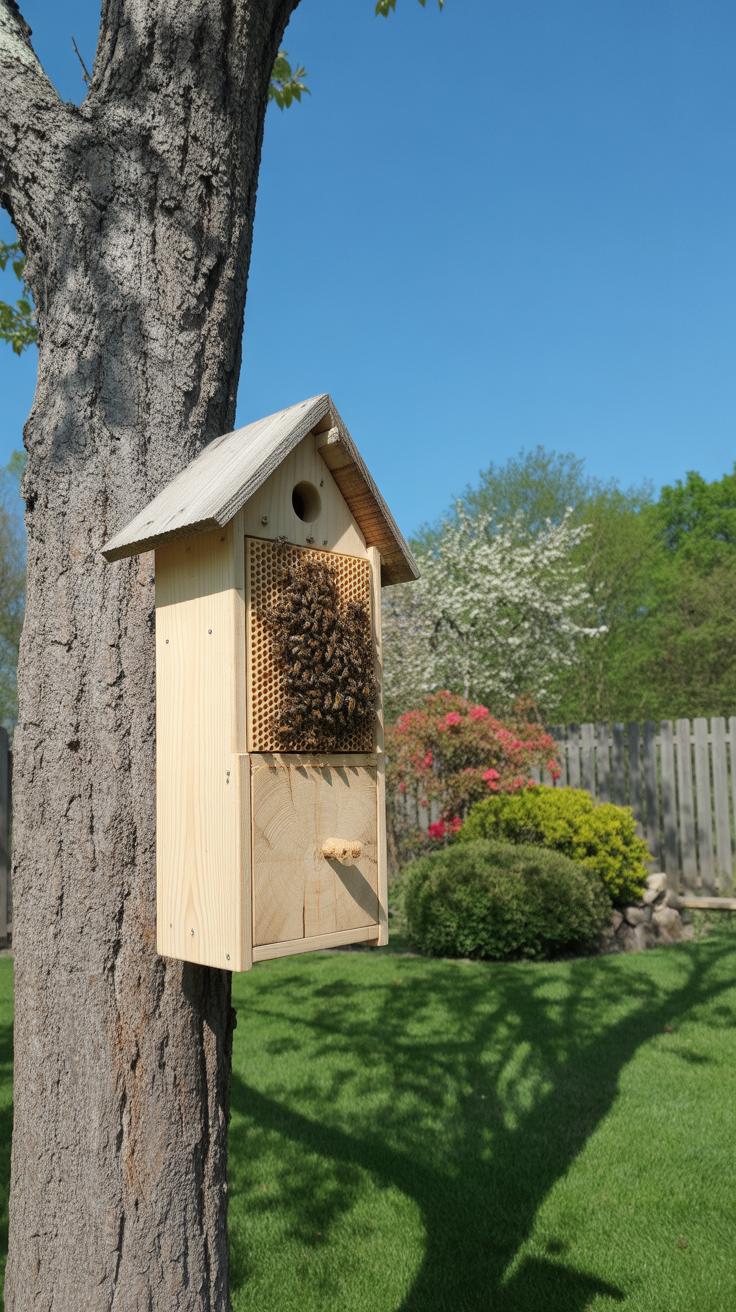
Where exactly you put your bee hotel matters quite a bit for the bees’ comfort and activity. They aren’t choosy just because—they need certain conditions to thrive. Sunlight plays a key role. Ideally, find a spot with morning sun. Early exposure helps bees warm up their bodies quickly, which means they become active sooner in the day. I’ve noticed when my bee hotel faced east, the bees would be buzzing steadily by mid-morning. That warmth seems to kickstart their morning routines.
Height is another factor. Mounting the hotel anywhere between 3 to 6 feet off the ground usually works well. Too low, and it can get damp or disturbed by pets. Too high, and it might be exposed to stronger winds. Speaking of which, shelter matters. Place the hotel where it’s shielded from heavy rain and cold gusts. A spot tucked under an overhang or beside a dense shrub can offer that protection without blocking sunlight.
Avoid shady or consistently wet areas. Bees dislike cold, damp surroundings—they struggle to warm up and tend not to nest in those places. I once placed a hotel under a large tree; it stayed too damp and shaded. I rarely saw any bee activity there. Do you want your hotel to feel inviting? Then pick a location that’s sunny but not blazing hot, elevated but not wind-blasted, and definitely sheltered from too much moisture.
Maintaining Your Bee Hotel for Health and Safety
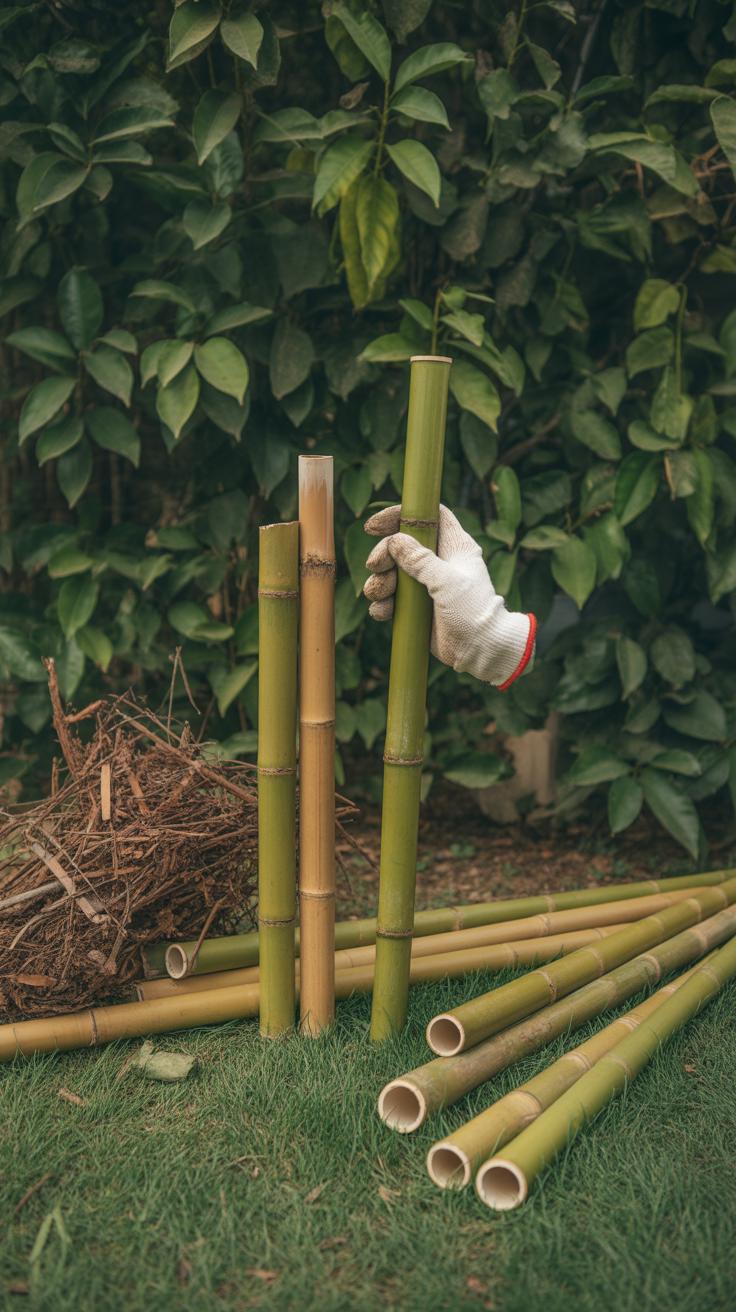
Keeping your bee hotel in good shape isn’t just about looks. It’s about making sure it stays a safe space for the solitary bees that might come to use it. Over time, old nest cells can build up and might harbor diseases or fungal spores, so cleaning them out is necessary. Usually, the best time to do this is in late fall or early spring, when the bees have either finished their cycle or haven’t started yet. Carefully removing the filled tubes or drilled blocks and replacing them can prevent illnesses from spreading among the next generation.
Look closely for signs of parasites or pests. You might notice small holes pecked into nests, abnormal debris, or inactive tubes where no bees emerge. Parasites like wasps, mites, or beetles can sneak in and disrupt the delicate balance. If pests are spotted, gently removing affected parts or using mild, natural treatments can help. Avoid harsh chemicals since they might harm the bees more than the invaders. It’s a bit of a balancing act—keeping vigilant without stressing over every little imperfection.
Replacing damaged or moldy materials keeps the hotel inviting and healthy. Sometimes, sticks rot or tubes crack — it’s tempting to ignore those, but bees probably won’t stick around. Consistent upkeep can feel like a chore, but those small actions can make a big difference, ensuring your bee hotel remains a welcoming retreat season after season.
Common Mistakes to Avoid When Building a Bee Hotel
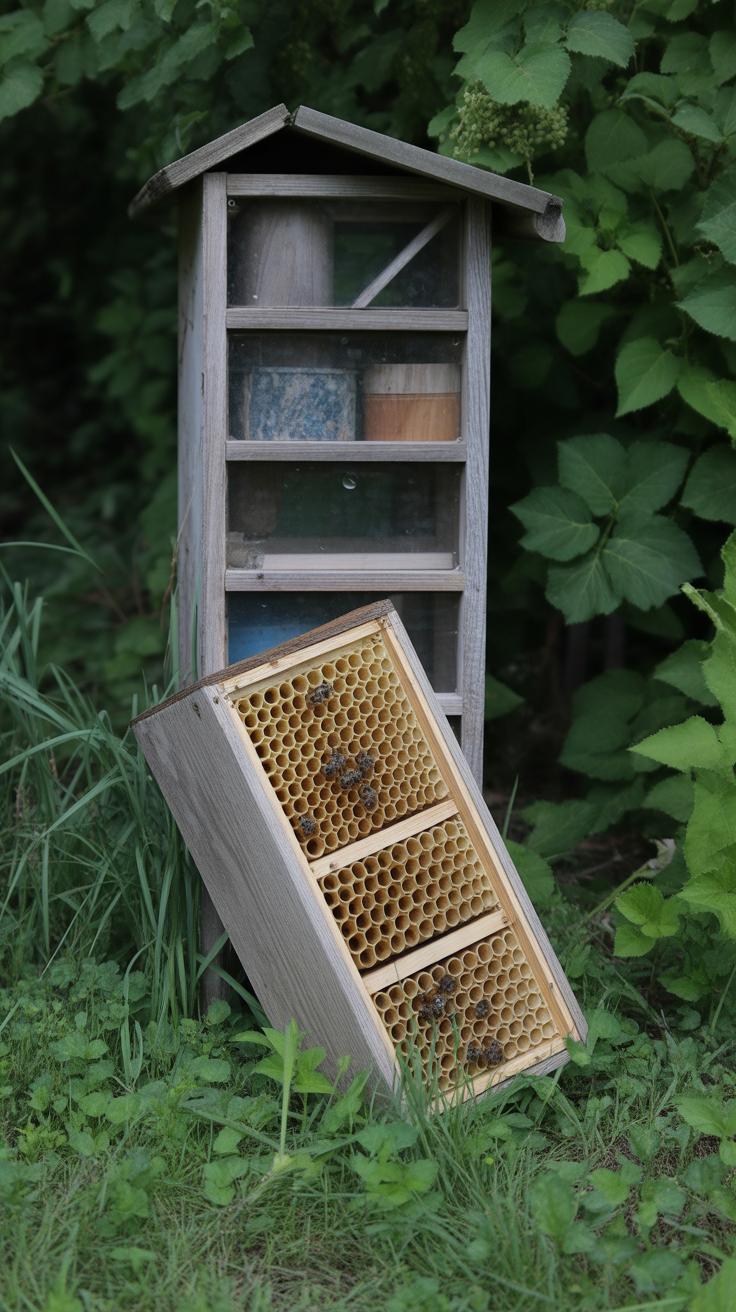
Using Incorrect Tube Sizes and Materials
Choosing the right tube diameter is more than a detail—it really shapes whether solitary bees will use your hotel or just pass by. Most solitary bees prefer holes between about 2 to 10 millimeters wide. If the tubes are too large, they won’t feel secure. Too small, and they can’t enter at all. You might be surprised how sensitive bees are to these tiny differences.
Also, avoid plastic tubes or liners. Plastic tends to trap moisture and doesn’t provide the natural texture bees look for when nesting. Worse, it can lead to mold or make the tubes dangerously hot under the sun. Wooden or paper tubes mimic natural tree holes and plant stems much better. Trust me, I learned this the hard way when my first hotel with plastic tubes stayed empty all summer.
Placing Hotels Too High or in Shaded Spots
Where you put your bee hotel matters a lot. Placing it too high—way above typical bee flight paths—can mean fewer visitors. Some say height gives safety, but bees usually patrol closer to the ground or within shrub layers. I once mounted my hotel quite high, thinking it’d be safe from predators, but hardly any bees showed up for weeks.
Shady spots also aren’t great. Bees depend on warmth to raise their young, so a hotel in constant shade might never feel warm enough. The ideal spot is somewhere with morning sun to warm the tubes quickly, but some afternoon shade to avoid overheating. If you don’t get this balance right, your hotel could become an empty frame rather than a bustling habitat.
Benefits of Having a Bee Hotel in Your Garden
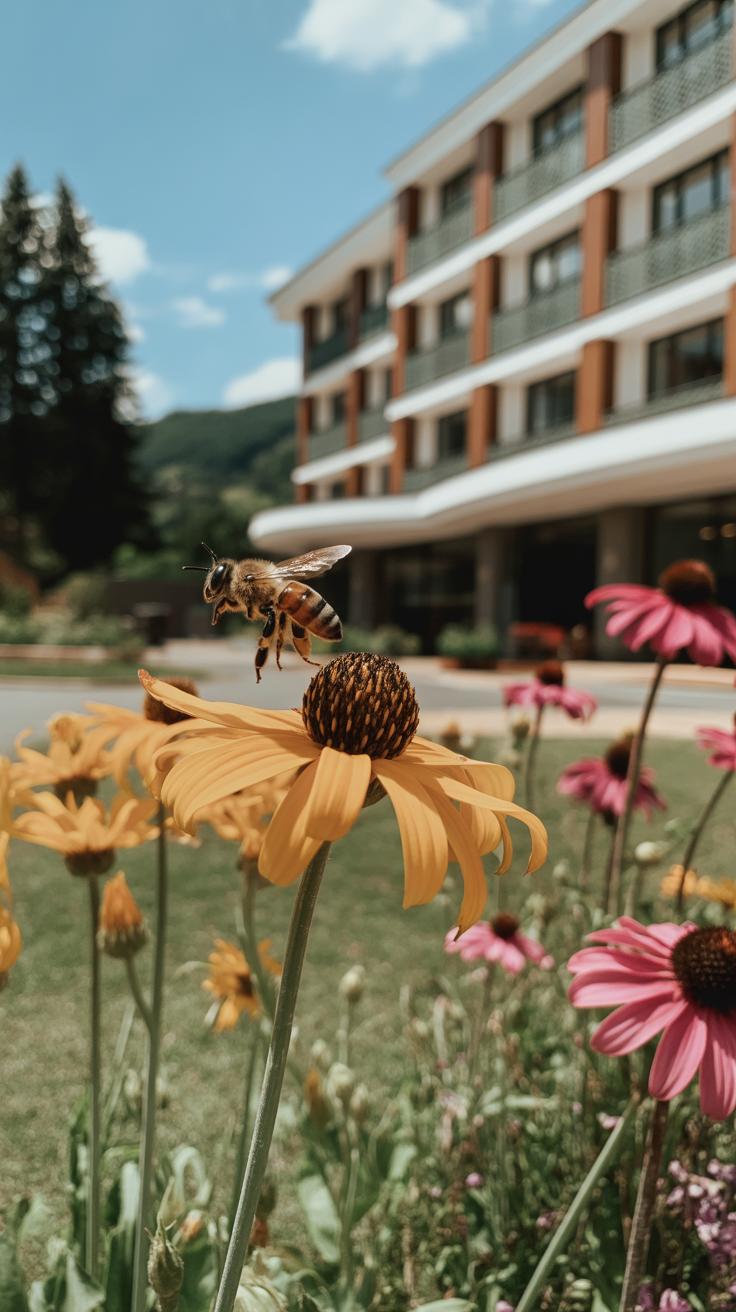
Boosting Pollination and Garden Health
When you add a bee hotel to your garden, you might notice a subtle but important change in how your plants fare. Solitary bees, unlike honeybees, tend to be excellent pollinators for many flowers and vegetables. Their tendency to focus closely on one type of flower can improve pollination success, which sometimes leads to better fruit sets and fuller blooms. You could think of them as quiet workers who prefer quality over quantity.
These bees don’t produce honey, but their role in shuttle flights between flowers helps increase genetic diversity among plants. This can mean healthier plants overall, often leading to sturdier growth and sometimes even better resistance to pests. If you’ve got a vegetable patch or a collection of flowering shrubs, these bees may quietly boost your yield without any extra effort on your part.
Have you ever wondered why some gardens, despite all care, don’t quite thrive? The absence of effective pollinators might be part of the reason, and this is where your bee hotel lends a hand.
Supporting Local Bee Populations and Biodiversity
Providing a dedicated shelter for solitary bees does more than just help your garden—it supports local ecosystems in ways you might not expect. Many native bee species are facing challenges like habitat loss and pesticide exposure. A simple bee hotel acts as a small refuge, giving them a place to nest and reproduce.
By encouraging these bees, you’re helping maintain a delicate ecological balance. Native plants depend on them, and in turn, those plants support other insects and wildlife. It’s a ripple effect you may not see day-to-day, but over time, it can strengthen local biodiversity in meaningful ways.
I’ve read studies showing reduced bee populations lead to gaps in pollination and plant survival. So, even if you’re planting just to enjoy a nicer garden, your bee hotel quietly contributes to the broader environmental health around your home. It’s a small, but perhaps surprisingly impactful, step toward helping our native bees stay part of the landscape.
Conclusions
Building your own bee hotel is a valuable way to support native solitary bee populations. Proper construction, location choice, and regular maintenance are key to creating a safe habitat for these important pollinators. Your active involvement can help mitigate some of the decline seen in bee populations worldwide.
With simple materials and a bit of care, you can create a thriving environment that benefits not only bees but also your garden’s health. Keep an eye on your bee hotel, ensure it stays clean, and enjoy watching solitary bees find shelter and contribute to pollination right outside your door.


